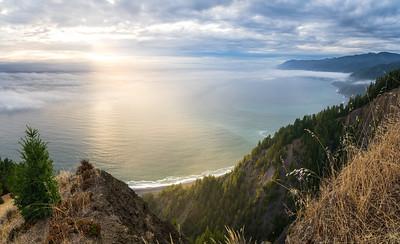BLM advises caution near slide areas on Lost Coast Trail
ARCATA, Calif. — The Bureau of Land Management is advising Lost Coast Trail hikers in the King Range National Conservation Area to be vigilant near three active landslide areas north of the Black Sands Beach Trailhead in Shelter Cove, and to consider postponing their hike.
Mud, rock and woody debris have been falling onto the trail in areas between Sea Lion Gulch and Randall Creek, and between Shipman Creek and Gitchell Creek. The slides are most active during and after rainstorms, and beach stretches can be impassable. The largest of these slides spans the entire beach about a half-mile north of the Black Sands Beach trailhead in an area popular for day hikes.
“In some areas the slides can block narrow stretches of beach,” said BLM Arcata Field Manager Collin Ewing. “Hikers should consider whether to proceed with their trip. If proceeding, they should assess conditions in slide areas and avoid the temptation to cross the landslides.”
Ewing stressed the importance of contacting the King Range Visitor Center, 707-986-5400 or the Arcata Field Office at 707-825-2300, for information on trail conditions, tides, and creek levels before heading out.
The Lost Coast Trail is one of the few coastal hiking trails in the nation. There are no fees or permits required for day hiking, but overnight trips require permits available through www.recreation.gov.
The King Range also offers 80 miles of upland trails. Most are strenuous hikes due to the rugged nature of the King Range. Descriptions and conditions are available in the roads and trails report.
The BLM manages about 245 million acres of public land located primarily in 12 western states, including Alaska, on behalf of the American people. The BLM also administers 700 million acres of sub-surface mineral estate throughout the nation. Our mission is to sustain the health, diversity, and productivity of America’s public lands for the use and enjoyment of present and future generations.

